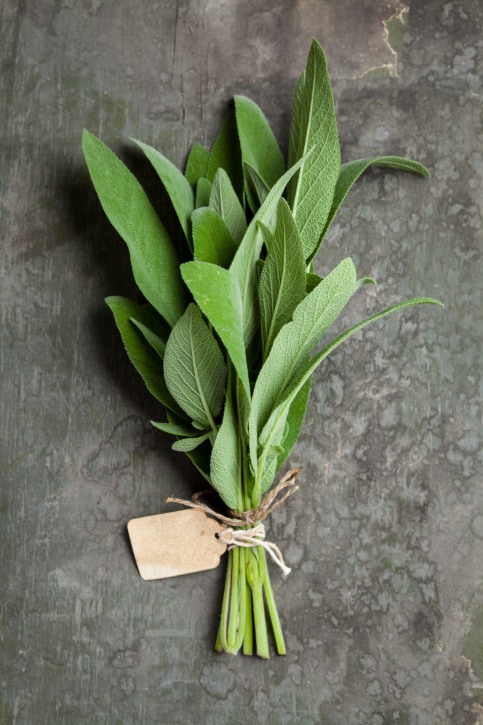
It is a herb that is native to the Mediterranean. It has gray-green leaves that have a pungent smell and a minty taste. It is mostly used for seasoning.
It can be consumed fresh, dried, whole or powdered but fresh sage is considered less bitter and hence more desirable. It is added in small quantities to flavor dishes and bring out a distinctive aroma. It is available throughout the year.
There is also a variety called pineapple sage that has a tinge of pineapple taste and used in salads.
Usage
Sage leaves are often used for curing appetite loss, excessive sweating and an upset stomach [indigestion], diarrhea and bloating. In Germany, sage tea is applied topically as a rinse or gargled for inflammations. It is popularly used in the preparation of sausages and pairs well with most meats. It is often infused into various syrups which are used to make cocktails and a variety of beverages. It may be applied directly to the skin for cold sores. Due to their aroma, they are a popular ingredient in a variety of cosmetics and soaps.
Nutritional Value
The leaves and stems of the sage plant contain antioxidant enzymes that protect the body from damage caused by free radicals.
It has anti-inflammatory properties and its use is recommended to people suffering from rheumatoid arthritis.
It helps against various cerebrovascular diseases and brain damage. It therefore helps prevent conditions like Alzheimer’s.
[“source-ndtv”]










